On Monday, August 21, the Lower 48 states will be treated to a spectacular astronomical event: the rare chance to see the moon pass directly in front of and cover the sun. It’s been nearly 40 years since we experienced a total solar eclipse, and scientists don’t expect us to see another one that traverses from west to east coast until 2045.
While skywatchers in northern Colorado will not be able to view a total solar eclipse – for that you have to travel to Wyoming or Nebraska – we will still see a partial solar eclipse (weather permitting of course) when the moon covers 92% of the sun.
According to NASA’s interactive eclipse map, the time to see this spectacular sight in the Fort Collins area is from mid-morning to early afternoon.
Partial eclipse begins at 10:23AM as the moon touches the sun’s edge
Maximum eclipse occurs at 11:47AM when the moon is closest to the center of the sun
Partial eclipse ends at 1:13PM when the moon leaves the sun’s edge
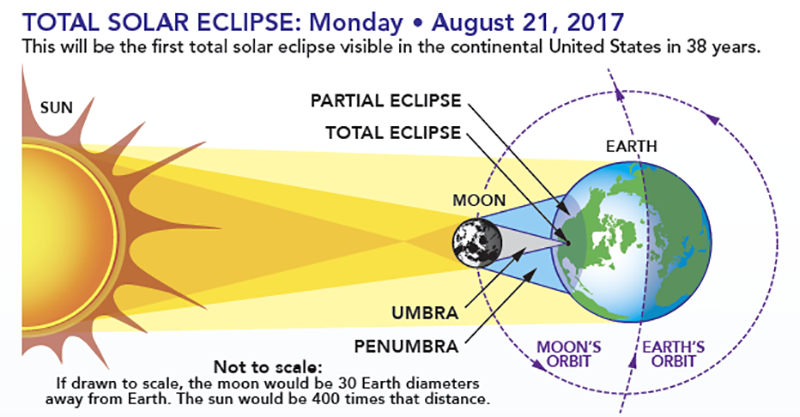
Our libraries will be offering STREAM Lab activities throughout the month of August that can be done in the library for make-and-take projects for kids, so come into the kids area and have some fun!
There will also be a presentation on the upcoming solar eclipse and why it matters held at Old Town Library on Monday, August 7 beginning at 7PM. Andy Caldwell, FRCC astronomy instructor & coordinator for the Stargazer Observatory, joins Greg Halac, from the Northern Colorado Astronomical Society, to help us all understand this exciting phenomenon.
Viewing Safety
Looking directly at the sun is unsafe as NASA explains except “during the brief total phase of a solar eclipse (totality – which we will not have in the Fort Collins area), when the moon blocks the sun’s bright face.” The only safe way to view the uneclipsed or partially-eclipsed sun is through special-purpose solar filters like ISO-certified “eclipse glasses” or hand-held solar viewers (NOT sunglasses or binoculars).
The Library District has a limited number of solar eclipse glasses available for free to individuals who previously subscribed to our weekly eNews and received the free coupon in their email on August 1. (Some restrictions will apply.)
If you didn’t get a chance to subscribe to our eNews program alerts in time, you can purchase eclipse glasses from a variety of sources including ThinkGeek (5-pack for $10) or the Great American Eclipse website which has multiple viewer options for sale including packs of eclipse glasses and SUNoculars.*
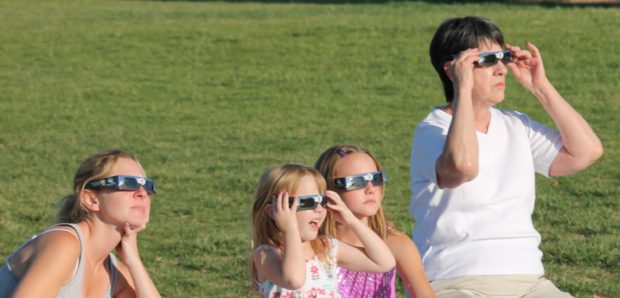
Welder hoods with a #14 or darker filter are also considered okay, but do not view through any welding glass if you don’t know its shade number.
DIY Pinhole Projectors
You can also create your own pinhole projectors using these resources. Pinhole projectors project an image of the sun onto a flat surface like a white sheet of paper so you can safely view the partial solar eclipse without looking at the sun.
- 3D Printed Pinhole Projectors – download and create your own #3D printed pinhole projector of the USA or a specific state
- 2D Printed Pinhole Projectors – available to download and print in the shape of the USA or any state
- Pinhole Camera – it only takes a few simply supplies to create this pinhole camera: white card stock, aluminum foil, tape, and a pin or paper clip
- Pinhole Projector Box – easy for kids and adults to create together; from the National Science Teachers Association
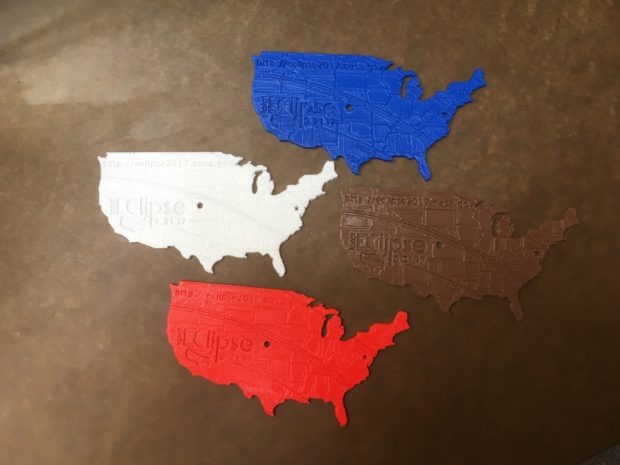
Alternative Viewing Methods
NASA scientists and astronomers shared additional viewing methods that will let you safely project the solar eclipse using your hands or a tree.
Use Your Hands
Create pinhole projections with your fingers. For example, cross the outstretched, slightly open fingers of one hand over the outstretched, slightly open fingers of the other. With your back to the sun, look at your hands’ shadow on the ground. The little spaces between your fingers will project a grid of small images on the ground, showing the sun as a crescent during the partial phases of the eclipse.
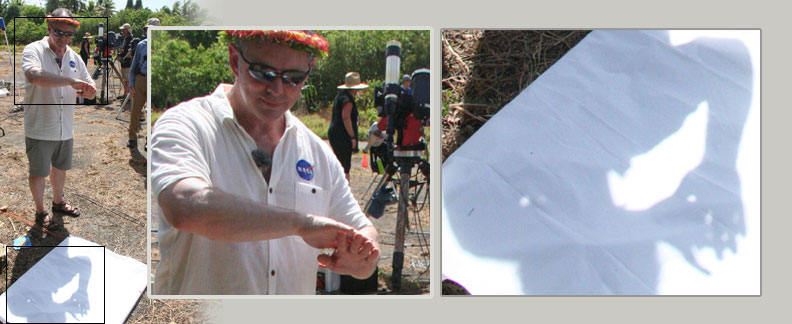
Find a Tree
Trees make great pinhole projectors. Layers of leaves and branches tend to create thousands of little pinholes allowing sunlight to pass through to the ground. On a sunny day you’ll notice thousands of circles of light projected onto the ground beneath the trees around you. During the partial phases of an eclipse, those projected circles of light actually turn into thousands of projected images of the eclipse. Keep your camera ready!
Awesome Eclipse Resources
There are great resources available to help you dig deeper into the science of solar eclipses. Take a look at:
- Fort Collins Museum of Discovery – attend the live presenter-led show Total Eclipse of FCMoD to get the scoop on exactly what happens during an eclipse and learn how you’ll be able to best observe the upcoming eclipse (Admission $5-7; show runs Wednesday, Friday, Saturday, and Sundays in the Otterbox Digital Dome Theater). The FCMoD is also offering Solar Eclipse 2017: Chasing the Shadow on August 12 from 10AM-1PM (free).
- Lory State Park – join guided educational hikes, create pinhole viewers, and learn about scientific, historical, and cultural aspects of total eclipse events. Activities run from 10AM-2PM and are free of charge with a valid state park pass.
- NASA’s Eclipse 2017 Website – a must-read for any eclipse enthusiast! It includes educational videos, downloadables, broadcasts, live video streams, art projects, science challenges, and much more.
- Total Solar Eclipse 2017 App – a free app that gives you access to live video streams of the total solar eclipse hosted by Exploratorium educators and NASA scientists; available for Android phones and tablets, iPhone, iPad, and iPod Touch.
- Fiske Planetarium at CU-Boulder – the website includes videos, info on hosting a watch event, and a link to free online course taught by Dr. Doug Duncan, CU Astronomer and Fiske Planetarium Director.
Road Trip!
If you don’t mind taking a quick trip to Wyoming or Nebraska, you might be able to view the total solar eclipse. These maps will give you the anticipated path of the total solar eclipse and help you determine your viewing location. Wheatland, Wyoming is probably the closest drive from Fort Collins.
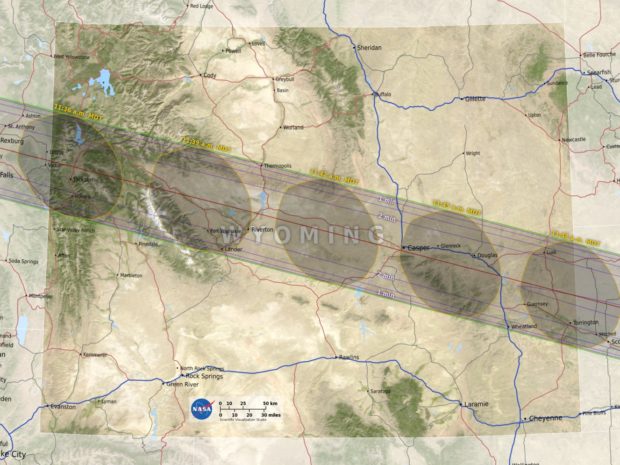

A total solar eclipse is one of nature’s most spectacular sights. We hope you enjoy the rare experience from whatever location you might find yourself!
Is your curiosity piqued?
Learn more about eclipses, the solar system, and our amazing universe at the Library. #ConnectToCuriosity
*The listing of these companies does not indicate an endorsement of the company or product by Poudre River Public Library District. Please check carefully before purchasing solar eclipse glasses to ensure they are safety-compliant.

